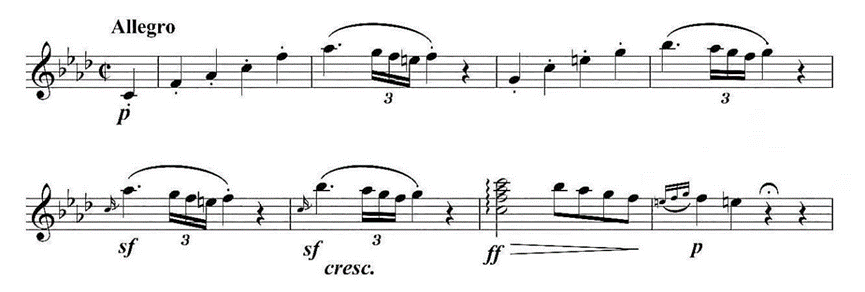2024知到答案 钢琴艺术指导(双语)(山东科技大学) 最新智慧树满分章节测试答案
第一章 单元测试
1、判断题:
下列词汇是否正确?Are the following words correct?听众 Audience音量 Volume重音 Accent技巧 Technique风格 Style呼吸 Phrasing气口 take a breath重音 Accent主奏者 Soloist音乐情绪 music emotion节奏律动 Rhythm/Eurhythmics
选项:
A:错
B:对
答案: 【对】
2、判断题:
下列词汇是否正确?Are the following words correct?反复记号 repeat表情术语 expression terminology乐句划分 division of phrases声部层次 voice part gradation织体结构 texture and structure和声曲式 harmony and musical form,音乐风格 musical style
选项:
A:错
B:对
答案: 【对】
3、判断题:
下列词汇是否正确?Are the following words correct?音准 Intonation旋律 Melody调性 Tonality复调 Polyphony前奏 Prelude高潮 Climax尾声 Coda
选项:
A:错
B:对
答案: 【对】
4、判断题:
下列词汇是否正确?Are the following words correct?音高 pitch时值 duration连跳 legato or staccato谱号 clef调号 tone mark拍号 time signature速度 tempo力度 strength节奏 rhythm
选项:
A:对
B:错
答案: 【对】
5、判断题:
下列词汇是否正确?Are the following words correct?与独奏或独唱声部完美契合 Perfect fit for solo parts节拍吻合 Tempo matching节奏律动张弛一致 Rhythm is consistent声部平衡 Voice parts balance音乐处理一致 Music processing不被听众察觉 Unnoticed by the audience
选项:
A:对
B:错
答案: 【对】
第二章 单元测试
1、单选题:
听辨,以下旋律是哪个作曲家的作品?
Which composer's work is the following melody? 
选项:
A:贝多芬Beethoven
B:拉赫玛尼诺夫Rachmaninov
C:莫扎特Mozart
D:柴可夫斯基Tchaikovsky
答案: 【柴可夫斯基Tchaikovsky】
2、单选题:
听辨,以下旋律是哪个作曲家的作品?
Which composer's work is the following melody? 
选项:
A:贝多芬Beethoven
B:拉赫玛尼诺夫Rachmaninov
C:柴可夫斯基Tchaikovsky
D:莫扎特Mozart
答案: 【贝多芬Beethoven】
3、判断题:
主动学习,要求我们在学习新作品时,要先积极主动的去聆听钢琴家的演奏,模仿大师的音乐处理。Active learning requires us to actively listen to the pianist's performance and imitate the master's music processing when learning new works.
选项:
A:错
B:对
答案: 【错】
4、单选题:
以下哪种记谱法最早出现了固定音高Which of the following notation methods first appeared with fixed pitch
选项:
A:四线谱 Four-line Musical Notation
B:纽姆谱 Neumes
C:一线谱 One-line Musical Notation
D:有量记谱法 The mensural notation
答案: 【一线谱 One-line Musical Notation】
5、判断题:
五线谱最早发源于古罗马时代。The music Notation originated in the ancient Roma.
选项:
A:错
B:对
答案: 【错】
